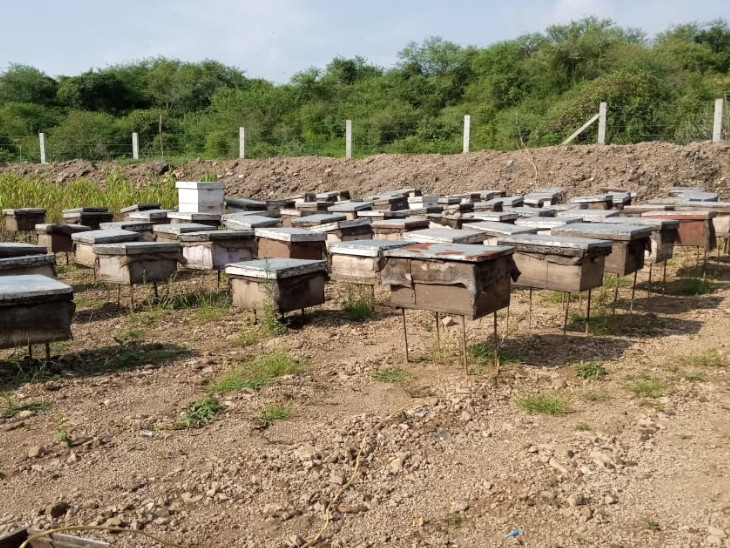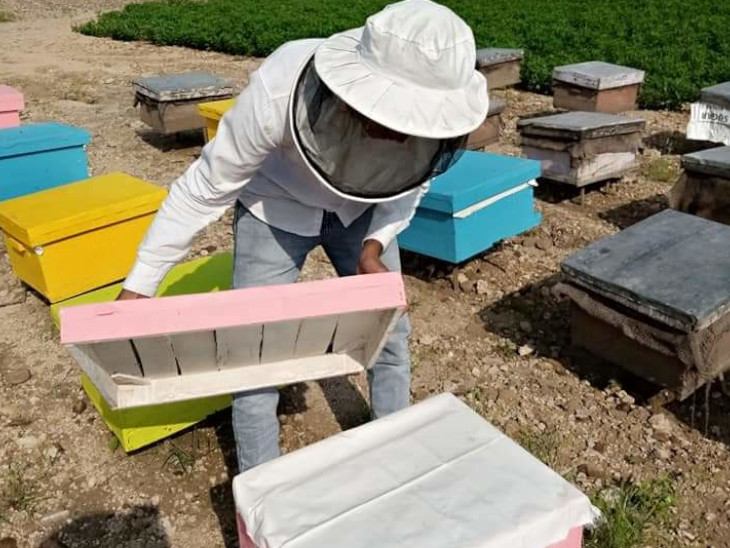
For honey cultivation, the youth has to go to regions like Gujarat and Rajasthan
Youngsters produce honey of different flavors and sell it at retailing and wholesale prices
Usually people cultivate a variety of vegetables, fruits or even flowers, but today we are talking about the sweet cultivation of honey from Italian bees.
Yes, you read that right from Italian beekeeping. Bees are cultivated in many places, but a 23-year-old man from Hathsani village in Vinchhia taluka in Rajkot district earns millions of rupees a year by cultivating bees.
Nilesh Gohil is the name of this young man who took up bee business after graduating in agronomy. Just a year ago he started cultivating honey-bee with 50 bee hives and today he has 200 bee hives. In just one year, Nilesh has set up this business with a monthly profit of over Rs 50,000.

Produces 1800 kg of honey annually.
This young man from Rajkot has graduated in agronomy. He then took practical knowledge of beekeeping for six months and finally started his own honey business a year ago.
Initially started selling honey in retail through social media mediums like WhatsApp, Facebook etc. Which received a good response.
To increase the production as the demand for honey increased, it also gradually increased the number of honey boxes and started producing more than 100 kg of honey per month. People were asking for honey through social media.
Moreover, the company also used to supply honey at wholesale when more production was available. Thus, Nilesh produces more than 1800 kg of honey annually. Out of which it gets an annual turnover of 7 to 8 lakhs.

Produces 150 kg of honey per month
Nilesh says about his journey, 'In the early days, he promoted the business through various social media and started taking orders through it. Now today I supply honey to the company as well as to the retailers. Usually more than 150 kg of honey is produced monthly.
There are six main types of honey, namely, ajmo, anise, bore, crystal (frozen honey), multi and rye. In addition, I am currently trying to produce desi honey by raising desi bees.
Honey-bee farming requires constant migration," says Nilesh, adding that beekeeping requires constant migration. Beekeeping is mostly done in areas where there is a standing crop and where flowers are plentiful.
I cultivate mostly in the seam area of Jamnagar, Kutch, Surendranagar, Amran (Morbi) and Junagadh. Because there is a lot of flower and crop. Just as there are different flowers and crops, there are different flavors of honey.
' Nilesh currently produces six types of honey, including ajmo, bor, fennel, rye, multi and crystal honey. Apart from this, for the last four months, it has been making efforts to produce desi honey.

'Production of honey mustard to go to Rajasthan'
goes to agriculture, except some dry regions of Rajasthan, Gujarat Nilesh. It produces Rayda honey in the region around Udaipur, Jaipur and Kota.
Mustard is grown in large quantities in most parts of Rajasthan," says Nilesh. So Rayada honey is produced there. In addition, honey is produced in large quantities as mustard is grown in large quantities.
Divyabhaskar News
How is honey made?
The bees first sit on the flower and the crop and suck the juice from it. It then discharges feces into a waxy square, which is converted into honey. Initially this honey has a high water content. The bees flutter their wings at night to remove water from the honeycomb.
How is honey made?
The bees first sit on the flower and the crop and suck the juice from it. It then discharges feces into a waxy square, which is converted into honey. Initially this honey has a high water content. The bees flutter their wings at night to remove water from the honeycomb.
This process lasts for 7 to 8 consecutive days. This type of honey is called raw honey. The honey is then kept for baking. Within approximately 12 to 15 days the honey is completely ripe and then it can be extracted from the beeswax. Which can be used directly, says Nilesh Gohil.
For Best View Please Open This Website In CHROME / OPERA Browser


No comments:
Post a Comment